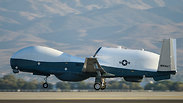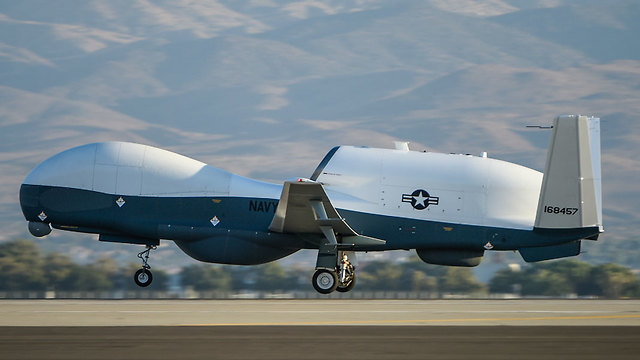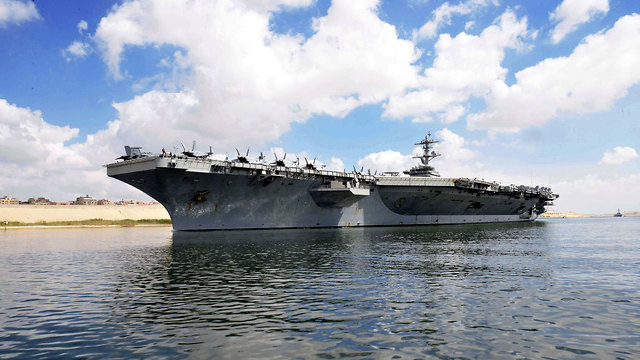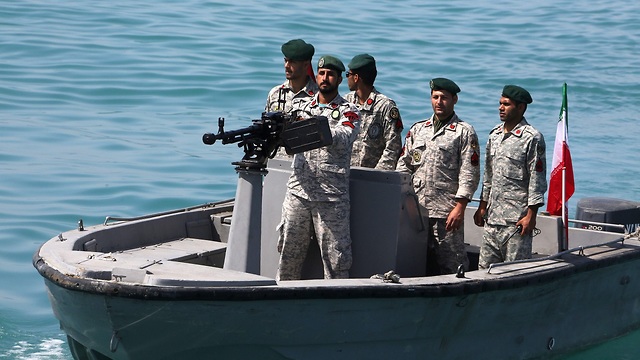

The race is on to retrieve the U.S. spy drone brought down by Iran
Analysis: Pieces of the world's most advanced intelligence gathering UAV are now lying at the bottom of the sea in the Strait of Hormuz; if the Iranians get there first, they could sell the technology to America's enemies and reverse engineer the technology, something they have done before
The MQ-4C Triton - the drone brought down by Iran over the Straits of Hormuz - is the naval version of the Global Hawk RQ-4, the most technologically advanced intelligence-gathering drone both in U.S in particular and the world in general. This is the first time that the advanced UAV has ever been intercepted.
The significance of its fall into the waters of the Persian Gulf is not just about the loss of tens of millions of dollars. The greatest concern is the fate of the components, in particular the sensors, of one of the most advanced and secret weapons in the United States arsenal.
The drone has radar sensors and optical sensors for both day and night as well as cameras that can film from a high altitude of almost 20 kilometers. It is fair to assume that as soon as the UAV was shot down, the Iranians scrambled to recover its parts from the water.
If they do get their hands on the UAV, the Iranians may try to reverse engineer the sensors and will almost certainly try to sell the technology to China and North Korea. Having the sensors will also allow the Iranians to understand what kinds of intelligence the Americans can gather with the Global Hawk.
This of course will also interest China, North Korea and Russia, making the interception of the UAV an extremely serious matter indeed.
In December 2011, the Iranians intercepted an RQ-170 Sentinel stealth drone, one of the most advanced in the U.S., close to the Afghan border; three years Iran presented its self-made replica.
The Sentinel was dubbed the "beast of Kandahar" due to its operations in Afghanistan. After it was seized by Iran, the U.S. sought its return, but was refused. Two years ago, an Iranian drone was shot down after entering Israeli air space, which was reportedly was an exact replica of the American UAV.
The race to retrieve the Triton fragments, especially the sensors, from the waters of the Persian Gulf could trigger to a violent confrontation between the Iranian Revolutionary Guards naval forces and the U.S. naval forces currently sailing in the Gulf.
Equally important, the interception of the UAV and the need to prevent it from falling into Iranian hands, as well as the need to take punitive and deterrent steps to the attack on their aircraft in international air space, could lead the Americans to send the USS Abraham Lincoln aircraft carrier and the massive naval task force accompanying it, into the Persian Gulf.
In order to do this, the task force and the carrier must pass through the Strait of Hormuz, which the Iranians have threatened to block by force.
The Abraham Lincoln is currently in the Gulf of Oman, given that the Americans have so far not been interested in making any move that could be interpreted as provoking the Iranians and possibly endangering American vessels.
If the aircraft carrier and its naval task force follow the interception of the drone with passage through the Strait of Hormuz into the Persian Gulf, it could create new tensions and a potential confrontation.
A spokesman for the U.S. Central Command initially said that no American aircraft had been in Iranian skies today," but at no point denied the claim that such a drone had been shot down.
Soon after, a U.S. official did confirm that the Iranians had indeed intercepted the spy drone. The Iranians claim the interception occurred in the Hormuzan Province, which borders the Strait of Hormuz in southern Iran, but it is also possible that the U.S. drone was indeed flying over international waters in the Gulf.
The Iranians may have knocked it out of the sky so it couldn’t track their military operations in the area. In such a situation, the interception of the drone is an Iranian violation of international law.
The Triton (or Global Hawk) flies at high altitude and is therefore very difficult to intercept. However, the Iranians recently transferred Russian-made S-300 anti-aircraft batteries to the Persian Gulf region, and these missiles are capable of bringing down a drone flying as high as a plane.
The felled UAV is one of the largest drones in the world. While similar to the Eitan – Israel Air Force's largest drone - its wingspan is far bigger, stretching a massive 40 meters compared to Eitan's 26.
The Triton cost $182 million, and it can review 100,000 square kilometers a day, almost five times the area of Israel. It can also stay in the air for more than 30 hours, at an altitude of 17,000 meters and at a speed of up to 330 knots. Its first flight was in California in 2013, and it only entered the service of the U.S. Navy last year.


















